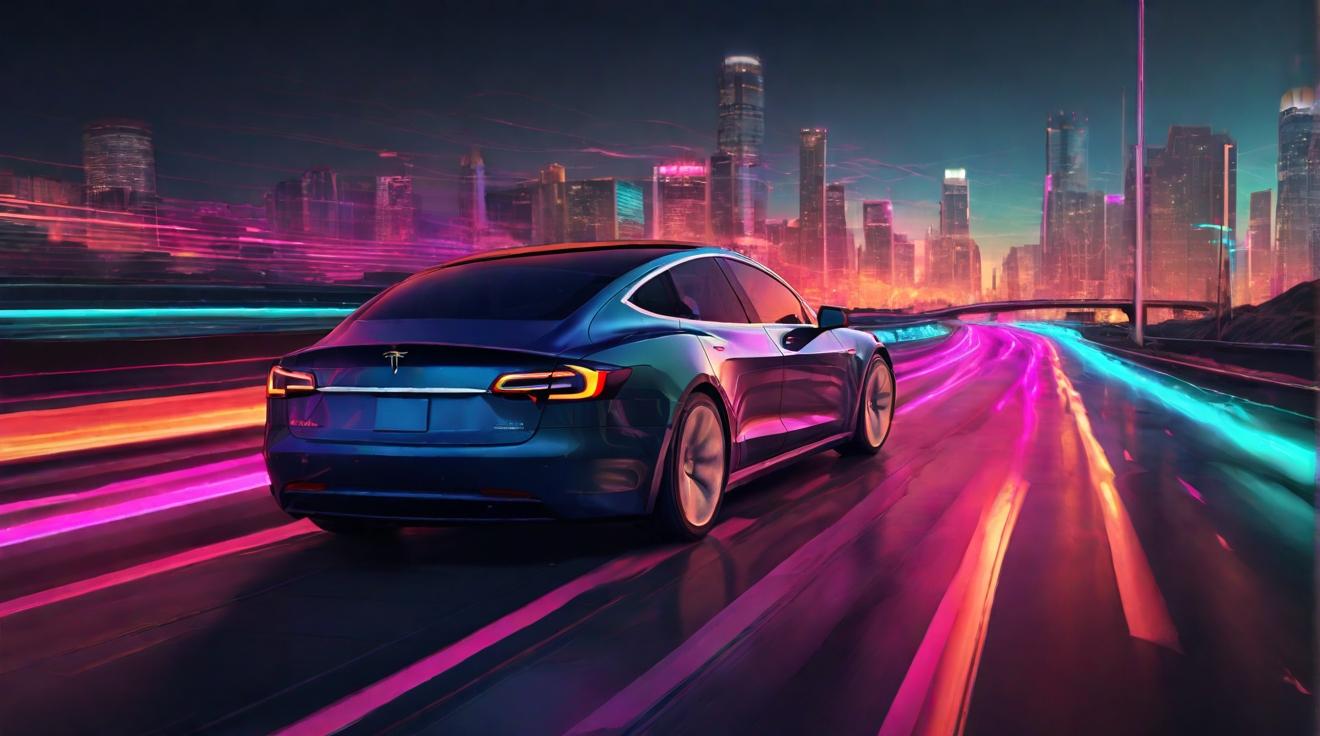Tesla's Autopilot Faces Criticism: Can Driver Assistance Software Solve the Problem?
Tesla's driver assistance software, Autopilot, has been under fire recently due to concerns about its safety. However, critics argue that the alternative may be even more dangerous. In highly risky areas like Interstate 405 in Los Angeles, where drivers often exceed speed limits and engage in distracted behaviors, the implementation of driver assistance technology could potentially provide greater alertness and safety.
Recent incidents have fueled the criticism surrounding Tesla's Autopilot and Full Self Driving software (FSD). The Dawn Project, for instance, launched a Super Bowl ad advocating for a boycott of Tesla and its self-driving software, citing safety risks and a specific incident involving a child. Additionally, the Washington Post reported on a fatal accident in Colorado involving a Tesla Model 3 and alleged that FSD contributed to the tragedy. However, Tesla CEO Elon Musk disputed these claims, emphasizing that the software was not in use during the accident. Numerous YouTube videos have also emerged, demonstrating instances where FSD failed to react appropriately, forcing drivers to intervene.
The question arises: could 405, known as one of the most dangerous roads in America, become safer if more distracted and impaired drivers utilized some form of driver assistance technology? While acknowledging the risks associated with hands-free driving, experiences with General Motors' Super Cruise, Rivian's Highway Assist, and Tesla's Autopilot reveal their potential to enhance safety. These technologies prove most beneficial during monotonous driving conditions and heavy traffic, as they alleviate driver fatigue and improve focus. Local usage is discouraged or restricted in some cases, and it is worth noting that limitations arise in certain highway scenarios, such as construction zones.
On the other hand, the alternative to hands-free driving on roads like 405 is a chaotic environment with impaired, distracted, and speeding drivers. Utilizing driver assistance technology presents a potentially safer option. For distracted drivers, such technology acts as a surrogate prefrontal cortex, enabling them to allocate attention where it matters most: the road. Edmunds' editor-in-chief Alistair Weaver asserts that while today's hands-free driving systems are not flawless, they offer promise and are evolving in the right direction. Weaver notes that as the technology progresses, it will become an invaluable convenience and safety feature.
It should be emphasized that Autopilot and FSD are not substitutes for responsible driving. However, when used properly, they serve as an additional safety net that can enhance driving skills. For those prone to distraction, having a hands-free driving system is preferable to being completely consumed by a mobile device.
According to the recent testing conducted by Edmunds, GM's Super Cruise on the Cadillac CT5V emerged as the top performer among hands-free driving systems. Its ability to instill a sense of calm and reliability in the driver makes it a standout choice. This sentiment aligns with personal experiences testing Tesla's Model Y, Rivian's R1S and R1T, and the Chevy Bolt EUV Premier, with the Bolt striking the optimal balance between helpful hands-free driving and caution.
While the criticism surrounding Tesla's Autopilot persists, it is crucial to consider the potential benefits that driver assistance technology can bring to dangerous roads like 405. As the industry advances and refines these systems, they may increasingly prove themselves as indispensable tools for both convenience and safety on our roads.
Analyst comment
Positive news. The use of driver assistance technology, such as Tesla’s Autopilot and GM’s Super Cruise, can improve safety on dangerous roads like Interstate 405. While these technologies are not perfect, they have the potential to make drivers better and safer. As the technology continues to improve, hands-free driving systems will become more valuable as both a convenience and safety feature. GM’s Super Cruise is currently the top-rated system according to Edmunds’ testing. Overall, the market for driver assistance technology is expected to grow as more drivers recognize the benefits.













